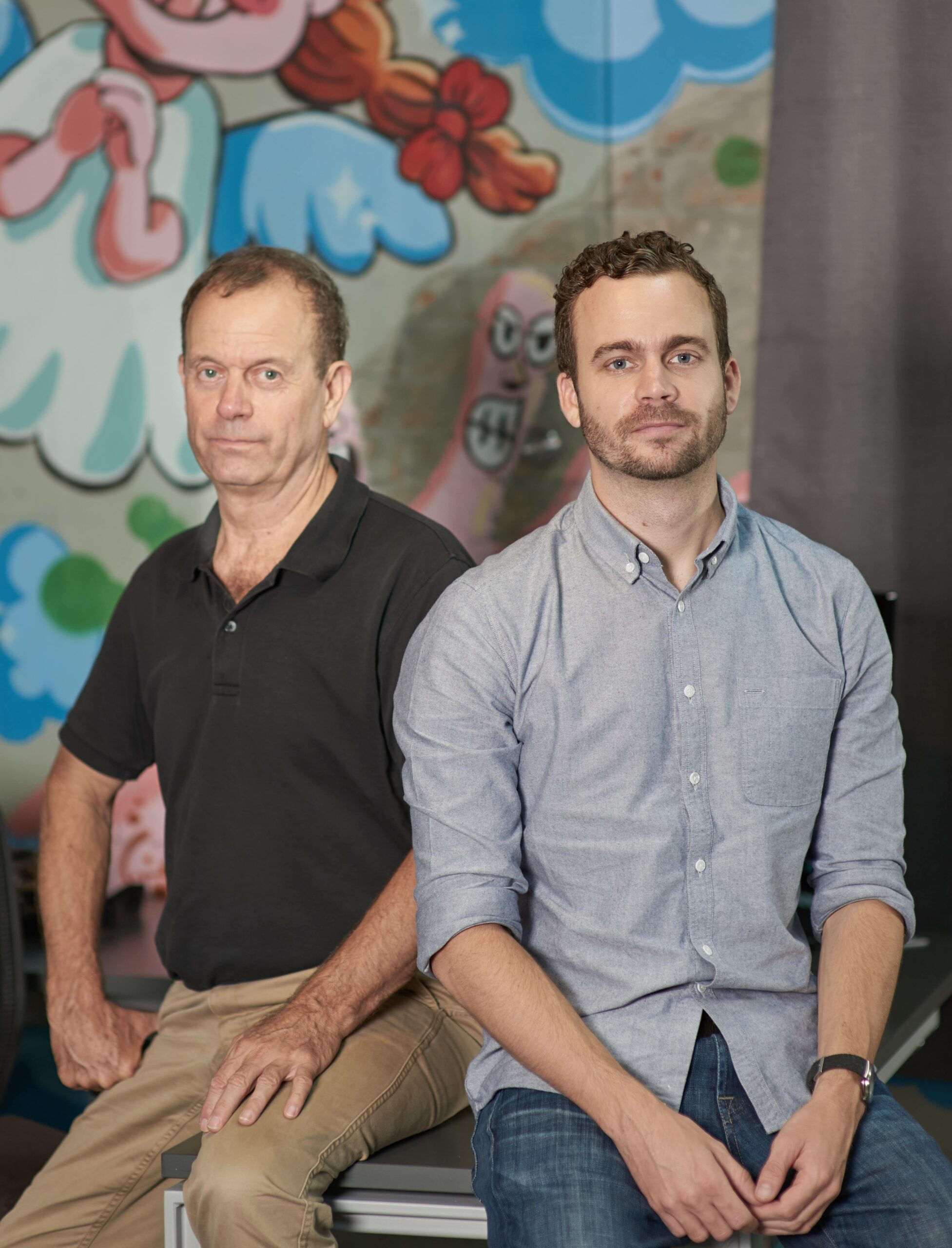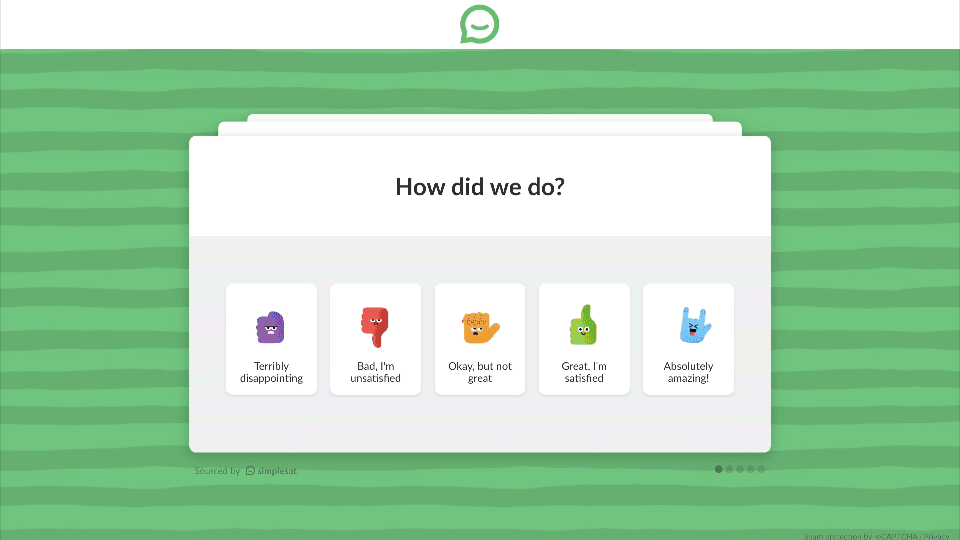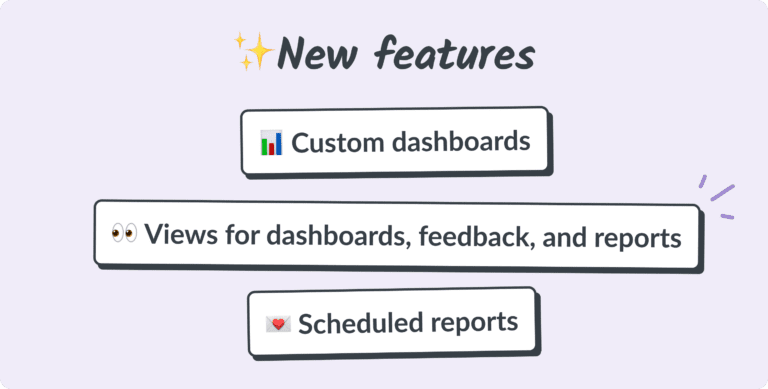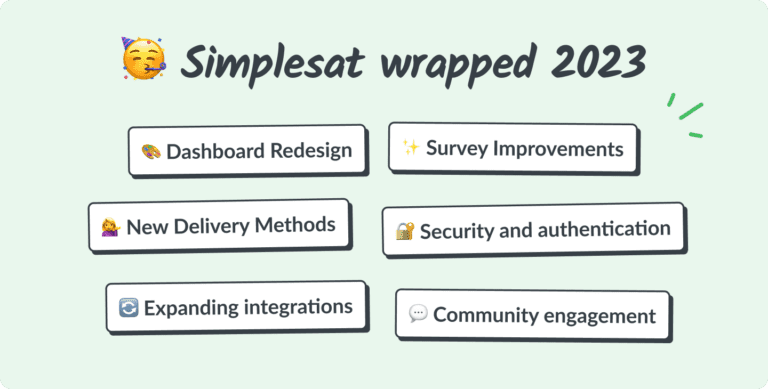Refuse to settle for the status quo.
At the root of every worthwhile project lies a spark of frustration.
When we have a problem that needs solving, our creativity kicks into gear. We adapt and we innovate, reaching our full potential and exceeding it. That’s why it’s important to pay attention to what’s going wrong, rather than just sweeping any issue under the rug.
Six years ago, my team and I were dissatisfied with our options. We had high standards that weren’t being met by the tools in the market. This is the story that led to the creation of Simplesat.
The short version
I was managing support teams at a marketing agency, and I wasn’t happy with any of the customer feedback assessment tools on the market.
We didn’t have a clear picture of what our customers wanted.
After months of frustration, we decided to build our own tool. 🔧
Simplesat was an answer to a very specific problem. But it was so effective at solving that problem that our customers wanted to use it as well!
And so, we released a new product. 🤘
It turned out that hundreds of medium and small businesses felt the same frustration we did. With Simplesat, they finally had a way to gather the data they were looking for.
The slightly longer version
Way back in 2008, I founded ![]() Pronto Marketing with my dad, Derek Brown.
Pronto Marketing with my dad, Derek Brown.

Pronto provides website management and marketing services for over 1000 small businesses worldwide.
Our success depends on providing amazing customer service at all times – that’s the only way we can stay in business. You see, Pronto’s business model is pay-as-you-go, with no contracts or setup fees. Every month, our customers can pack up and leave if they’re unhappy.
This keeps us on our toes to drive excellent performance. We have no choice but to keep earning our customers’ business over and over again.
But you can’t provide exceptional service if you don’t know how your customers really feel.
The problem ⛅
At Pronto, I was in charge of our customer service and production teams. And I was always looking for ways to improve our service.
I made everybody read How to Win Friends and Influence People. In particular, I was guided by Dale Carnegie’s pragmatic approach to making connections that last:
“You can make more friends in two months by becoming interested in other people than you can in two years by trying to get other people interested in you.”
My colleagues and I were very, very interested in our customers. We had an internal blog titled Service Journal where we’d log good and bad customer service experiences.
We measured customer satisfaction through Zendesk’s native tools:
- good/bad CSAT based on closed tickets
- the NPS email feature
Zendesk got us plenty of data… but it wasn’t the high-quality, multifaceted data we needed in order to excel.
The problem with Pronto’s CSAT was that it was too high. 🤷♂️
We consistently had a CSAT score of around 99%. But I knew that in reality, our customer service was far from perfect.
There were many improvements we needed to make. It was hard to see what to prioritize. What were our customers really thinking?
We tried to find ways to decrease our score, just to get the feedback we needed. But none of the existing tools we tried were effective or reliable. We ended up reverting back to Zendesk’s core solution while we searched for alternative options.
Meanwhile, NPS email surveys were a chore. 😩
Each batch needed to be sent out manually. It was always a headache to organize an accurate list.
We’d get a bunch of responses all at once, which required the team to shift their focus to respond to NPS comments for the next few days. Our normal operation was halted and we always had this lingering feeling that we were taking too long.
We needed better reporting and a better-integrated way to receive and analyze data.
Our solution 💡
Fed up with the available solutions in the market, we decided to take matters into our own hands. We’d build the tool that Pronto had always dreamed of.
We wanted to:
- Encourage customers to leave more critical feedback
- Improve response rates
- Motivate our team
- Develop reporting that delivers actionable insights
- Easily publish positive feedback on our website
- Automate all of the above
I started kicking around ideas for how we could make all of this work… and how to make it special, a cut above all the tools we tried.
The most important things I learned:
1. We need multi-question surveys to achieve growth. 🎨
I read as many scientific articles as I could on the subject of customer feedback.
I found a methodology named SERVQUAL which captures multi-dimensional feedback through the following metrics: Reliability, Assurance, Tangibles, Empathy, and Responsiveness.
Multi-question surveys are essential to gaining more context about how customers feel.
Of course, one-and-done surveys have an important role to play in assessing customer satisfaction too. They provide insights regarding a specific problem: here’s what works and what doesn’t.
But they don’t prove the comprehensive knowledge required to optimize performance and anticipate customer reactions.
2. Providing feedback should be fun (and addictive). 💃
So, we needed to ask more questions. But how to do that without placing a burden on our customers? Their time is precious and we didn’t want feedback to feel like a chore.
I was at the Incheon airport in Seoul when I took an OfficeVibe employee survey that Pronto was trying out.
The survey was fun and interactive. It was hard to stop clicking through it.
This is when I realized that surveys don’t have to be boring! They can feel like a game rather than a test.
My team and I looked at video games and animation while prototyping our survey designs. Our designer suggested we try the card swiping animation made popular by Tinder. We loved it! Here it is in action, glad we swiped right.

3. We had the opportunity to unburden our team. ✌
From the customer side, our surveys became much easier to use.
But we also started improving how the incoming data was being processed and filtered. We automated anything that could be automated. We had analytics we could rely on, which made it easier to plan ahead. NPS email processing became a fun routine rather than something to dread.
With our new tool, we could all breathe easier.
Better than expected 🌞
We started developing Simplesat for Pronto in August 2016.
We immediately saw improvements in response rates and feedback quality.
The difference was remarkable. We could respond to customer frustrations immediately, and we had a clear idea of what improvements to make going forward.
Then, something wonderful happened.
Pronto’s customers started asking if they could use these surveys too!
They had fun filling them out, they liked the layout, they liked being able to communicate with us through this new format.
They wanted to provide the same experience to their own customers.
We took a moment to celebrate… and then we decided to spin off ![]() Simplesat as a customer feedback management tool for small and medium-sized businesses.
Simplesat as a customer feedback management tool for small and medium-sized businesses.
The takeaway?
Don’t settle for “good enough” when it comes to improving your business.
If you don’t have the right tools for the job, refuse to settle for the status quo. Keep researching, experimenting, looking for better ways to achieve your goals. Nobody understands your needs better than you do, and there is sure to be a solution out there made by people who’ve been in your shoes. (If worst comes to worst, you can even build your tool from scratch.)
I am so glad we turned our frustrations into an opportunity. Pronto is functioning much better now that we’re not flying blind. As for Simplesat?
We’ve helped hundreds of businesses improve their customer service, but we’re just getting started.
CES aims to measure the overall experience of the customer when using your products or services. CSAT measures customer satisfaction when interacting with your support.














